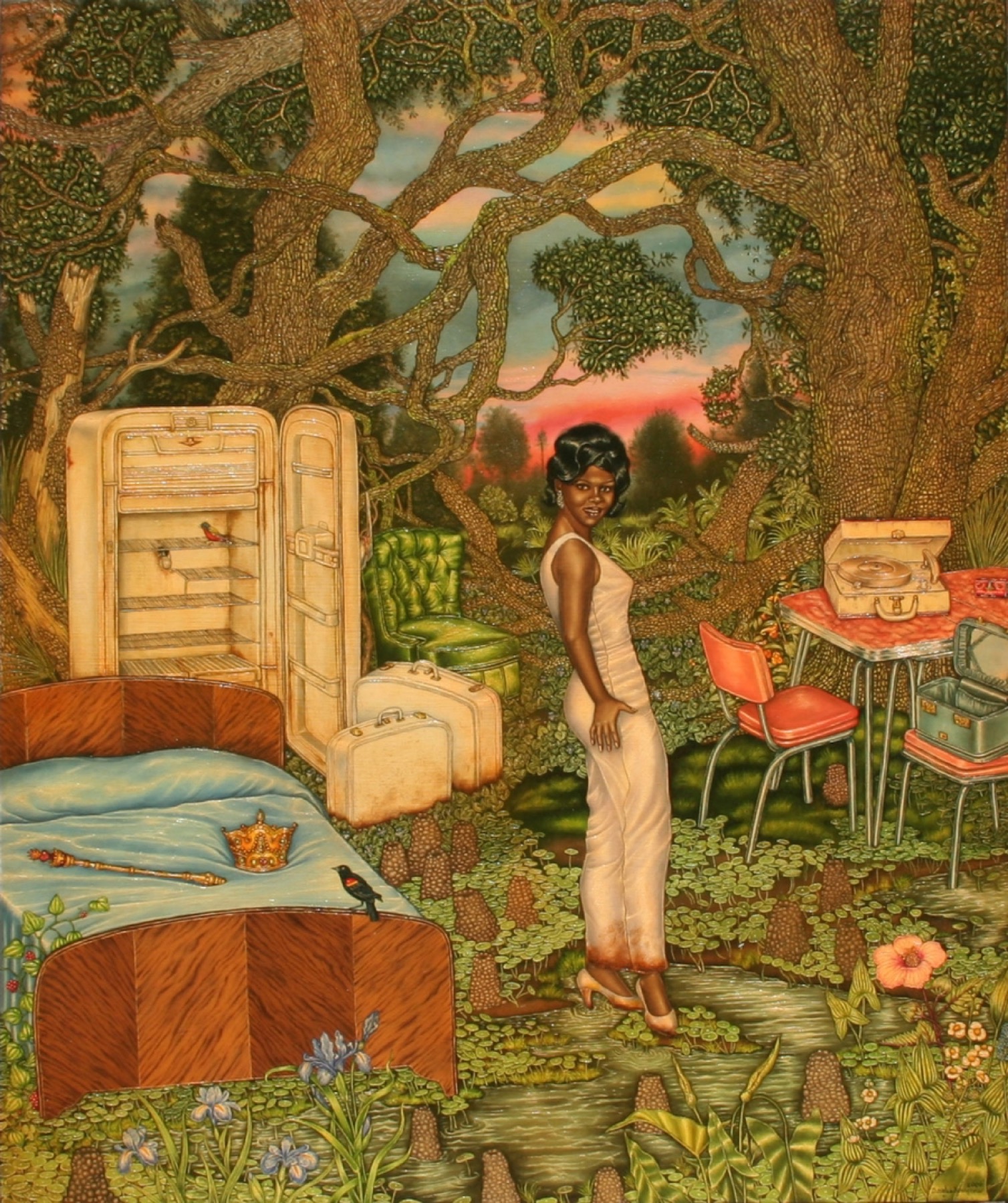
Douglas Bourgeois, “A New Place to Dwell,” 1987. © Douglas Bourgeois
SEEKING THE SOUTH IN CONTEMPORARY ART
By Alyssa Ortega Coppelman
In the Oxford American’s fall issue, Diane Roberts writes about the twentieth-century Florida author Lillian Smith: “She was fearless, a rabble-rouser and rebel who integrated her life and art.” Roberts’s essay is a wonderful homage to a woman whose work still has much to show us, even fifty years after her death.
Smith’s greatest contribution to the American project is that she showed us how to be an advocate for social justice, to be a person of conscience in communities that talk often about morality while exhibiting very little of its most basic sense. She taught me, and thousands of others, to love the South by resisting the South.
The visual companion to Roberts’s piece in the magazine is Carrie Mae Weems’s photograph “A Single’s Waltz in Time” (center panel), which captures the same fearlessness and exuberant defiance in the face of injustice evident in Smith’s literature.

As the OA’s art researcher, I seek out artwork that presents a well-rounded and nuanced view of the South—one that doesn’t shy away from presenting familiar viewpoints, as those are also valid, but that also attempts to portray a broader reality. It’s past time that our notions about the South, and about what imagery can be included when attempting to envision the South, are expanded.
In this mission, we are not alone. On view right now at the Nasher Museum of Art at Duke University is a crucial exhibition for these times. Southern Accent: Seeking the American South in Contemporary Art is a necessarily broad group of artwork that takes the South as its subject and approaches it from a wide array of viewpoints. Unsurprisingly, several artists featured in Southern Accent have been published in our pages: Weems, Deborah Luster, Fahamu Pecou, Willie Birch, Amy Sherald, Burk Uzzle, Radcliffe Bailey, and of course Gordon Parks, William Eggleston, and William Christenberry, among others.
Southern Accent co-curators Miranda Lash (of the Speed Art Museum) and Trevor Schoonmaker (Nasher’s chief curator) gathered work by sixty artists living in the South and throughout the United States who examine ideas of the South. The exhibition focuses largely on the time period from the pre-Civil Rights 1950s through today, with a focus on work made in the past thirty years and the presentation of viewpoints from immigrants and first-generation Americans. The cumulative effect is to confront, examine, and turn on its side the storied, well-embedded mythos of the South.
In her introduction to the exhibit, Lash illuminates some of the more niche but beloved ideas of the South—in the world at large and specifically in the art world—which prizes self-taught “folk” artists but limits reflection on work by Southern artists that falls outside of this realm. “Memory, nostalgia, fantasy, desire, and fear all exert a powerful influence on how the South is spoken about and portrayed,” Lash writes.
While Southern Accent celebrates a number of artists who come from the South, the exhibition’s goal is not simply to advance visual art from and about the South but rather to explore what is at stake in showing this work—what do these images, sculptures, and installations mean, in terms of the public imagination and art-world recognition?—and how it both interprets and influences how the South is understood.
Just as each issue of the Oxford American is an opportunity to concentrate on artwork by Southern artists or by artists making work that communicates ideas about the South, exhibitions like Southern Accent do a great amount to widen and refresh the scope of what’s acceptably seen as Southern, paving the way for more varied visions to gain a platform for exposure.
Here is a selection of images from the show, some of which you may have seen in the pages of this magazine.
Images courtesy Nasher Museum of Art.
https://main.oxfordamerican.org/item/1046-nasher-southern-accent#sigProId15f9c42d2d
Southern Accent: Seeking the American South in Contemporary Art, a collaboration with the Speed Art Museum, in Louisville, Kentucky, is on view at the Nasher Museum of Art at Duke University in Durham, North Carolina, through January 8, 2017. It will then be at the Speed Art Museum from April 29 to August 20, 2017. The accompanying catalog was published by the Nasher Museum of Art at Duke University.



